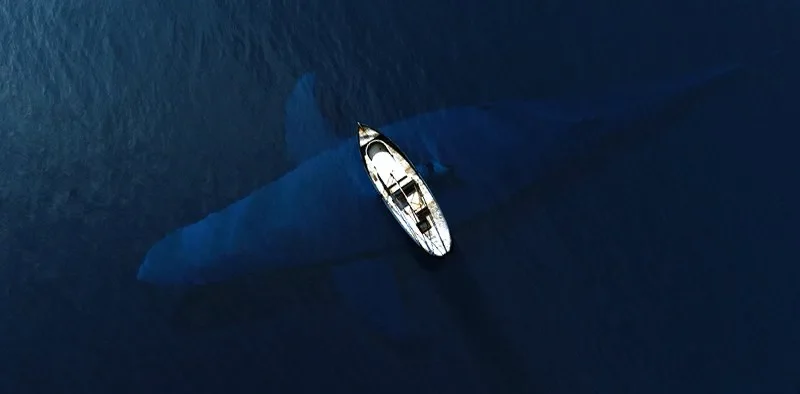The Myths & Legends of Whales
The ocean sure is a curious thing, full of mystery, wonder and perhaps a few creatures that are yet to be discovered?! Even the creatures that we do know about hold many tales of their own.
And if you would like to read about the myths and legends of the largest living animal on earth, then you have certainly come to the right place!
Throughout the history of human civilisations whales have been the stars of many cultural stories. Here are a few favourites from around the world.
The Story of King Sulemani & the hungry whale
Sulemani lived in East Africa and grew lots of crops to feed his people and animals. One day the king asked God if he could give him the strength to feed the entire world.
God was unhappy with this request from Sulemani and therefore resurrected a giant creature from the water (a whale) that went to the king’s crops and ate every last bit of the crop.
The hungry whale then turned to the king and asked for more food.
Sulemani then asked the whale if there were more of his kind to which the whale replied he came from a tribe of 70,000.
The king then realises that God had sent the whale to him to teach him a lesson. It was never his responsibility or place to feed all of the world’s people or animals.
The Chinese Myth of Yu-kiang
In ancient China, people believed that the ocean was ruled by a giant mythical creature called Yu-kiang. Yu-kiang was said to have been several thousand feet long and had the body of a whale and had human hands and feet. The people believed that if Yu-kiang was angered, it would transform into a huge bird and create massive storms on the ocean.
Native American “Lord of the ocean”
The Native American culture believes Orca (Killer Whales) are the “Lord of the Ocean” and symbolise harmony, romance, and family. The Lord of the Ocean was said to have Seals as their slaves, dolphins as their warrior protectors who protected people that travelled far away.
The Tlingit people of Canada tell the popular legend of a man called Natsilane. Natsilane was destined to become the next chief of his tribe. This made his brothers jealous, and they decided to take him out on a hunting trip. During the hunt Natsilane injured a sea lion but did not kill it and as he turned to see his brothers’ reaction, he realised that they had paddled away and left him stranded on the deserted island.
The next day the chief of the sea lions came to Natsilane and asked him to help save the sea lion that Natsilane had speared as it was his son. After Natsilane helped the sea lion, the chief in return taught him special skills and carried him back to his home.
Back on his home island, Natsilane carved a killer whale from cedar wood and set it into the ocean where his brothers were hunting. He then gave the killer whale life through his spirit song and asked it to seek and murder his brothers, to which it obeyed. After the whale was done, Natsilane ordered it to never harm another human again but instead save any person that it found stranded in the water.
Whales in Vietnam
Whales are seen as holy creatures in Vietnam. Vietnamese people believe whales bring luck, safety, and prosperity. When a deceased whale is found, it is then buried on land, and may even have a shrine erected at the burial site. Thousands of people might show up to the burial and mourn the whale’s passing away, much like someone would do with a family member. The Vietnamese will also respectfully refer to the whale as “Lord”.
“Hanau ka palaoa noho i kai” A Hawaiian chant
“Hanau ka palaoa noho i kai” is a traditional Hawaiian chant that teaches whales are part of both darkness and light, divine & physical. The chant translates to Born is the whale living in the ocean. Alii (chiefs) and kahuna (priests) guarded and held any beaches where whale bodies often washed up. The whale is believed to be a kinolau (animal form) of the Hawaiian ocean god Kanaloa.
The legend of Paikea
New Zealand Maori tribes believe in the legend of Paikea. Paikea was a young man who was the favourite of his tribe’s chief. Paikea’s older brother Ruatapu grew extremely jealous when Paikea was given a higher rank in the tribe. Ruatapu then hatched a plot to kill him together with their other brothers by building a canoe that had a hole in it. Ruatapu plugged the hole with his feet and invited all his brothers to go on a fishing trip. When they were far from the coast, Ruatapu opened the hole and swam toward his brothers to drown them.
When Ruatapu swam over to Paikea to try and drown him, Paikea summoned a humpback whale to him by singing a song. Paikea then climbed onto the whales back and got back to the safety of land. He remained the only survivor of his brother’s evil plot.
Still to this day, some Maori tribes believe that the sighting of a whale signals that the tribe should inhabit that particular place. Additionally, whales are considered direct descendants of the god of oceans, Tangaroa.
Australian Dreamtime stories by the Aboriginal People
Aboriginal people who resided along the vast coastlines of Australia have long associations with whales. Their stories are engraved and painted on and passed down through them dreamtime stories. The whale is even the totem of the Darkinjung People of the Central Coast of NSW.
Whales really are mysterious creatures, and when seeing them yourself out on the ocean, you can understand why there are plenty of stories from around the world. So why not head out on a Bremer whale watching tour, spot the humpbacks along the western Australian coastline or see the Orca pods at the Bremer Bay Canyon and create a legendary story for yourself!




